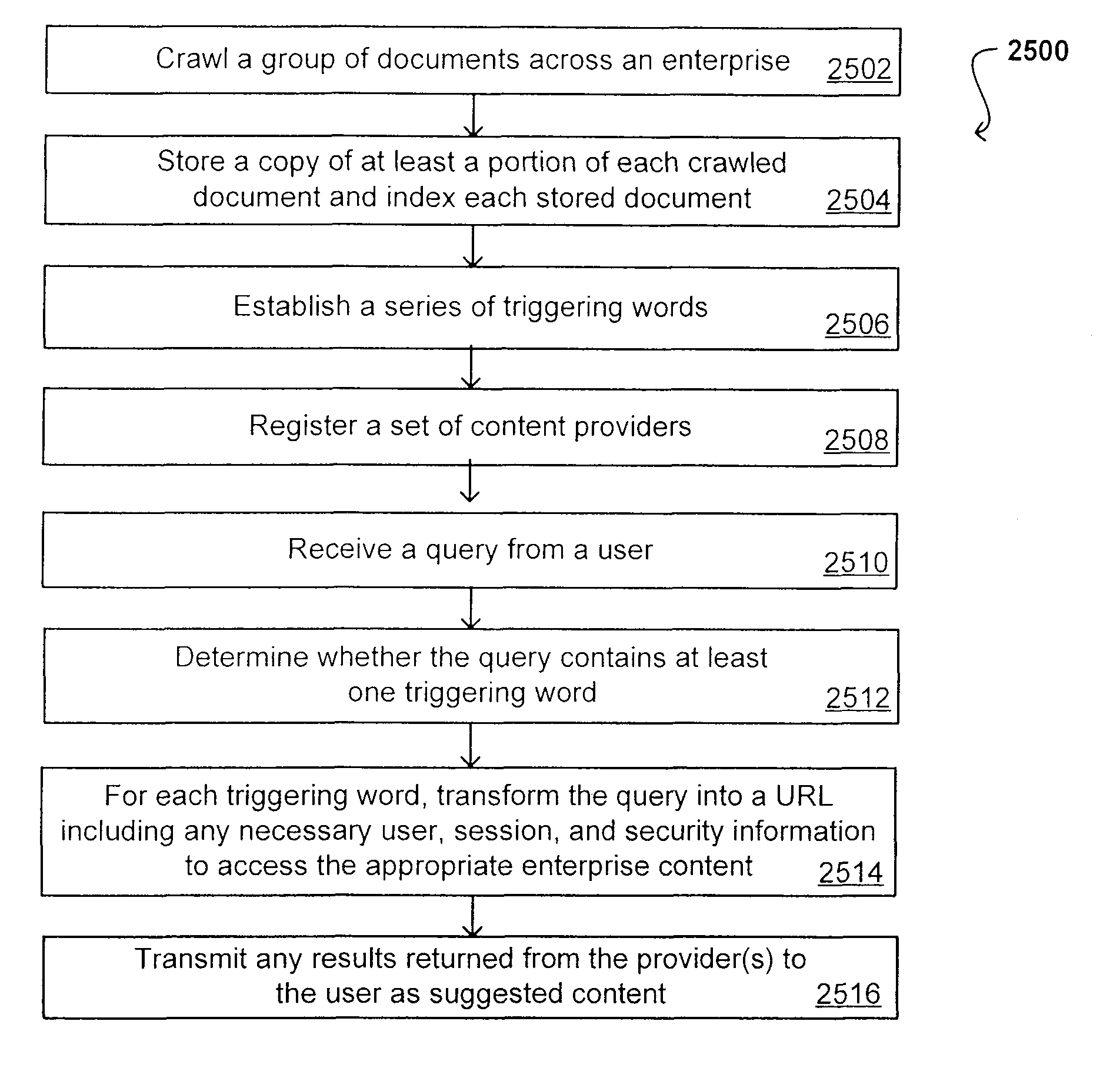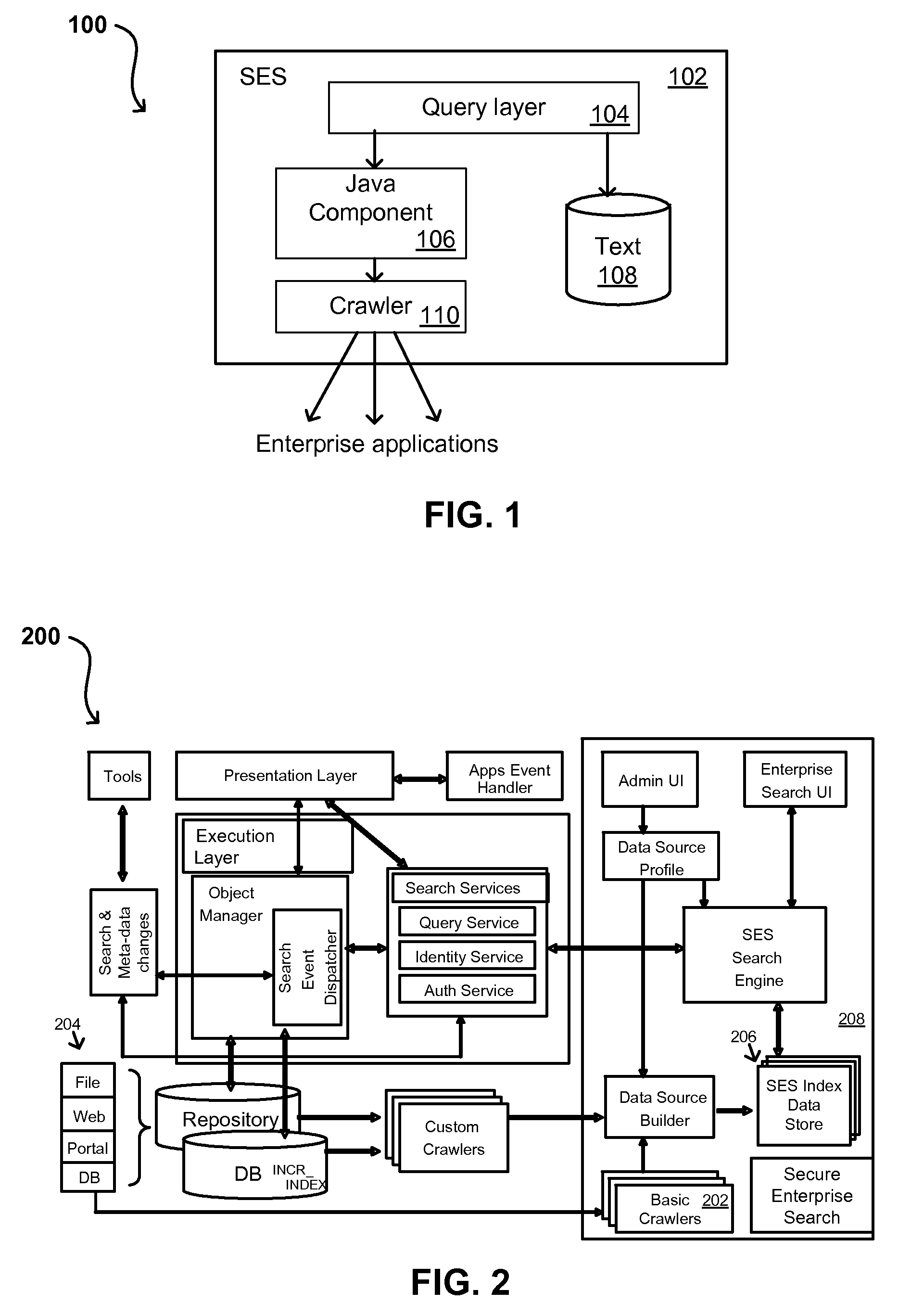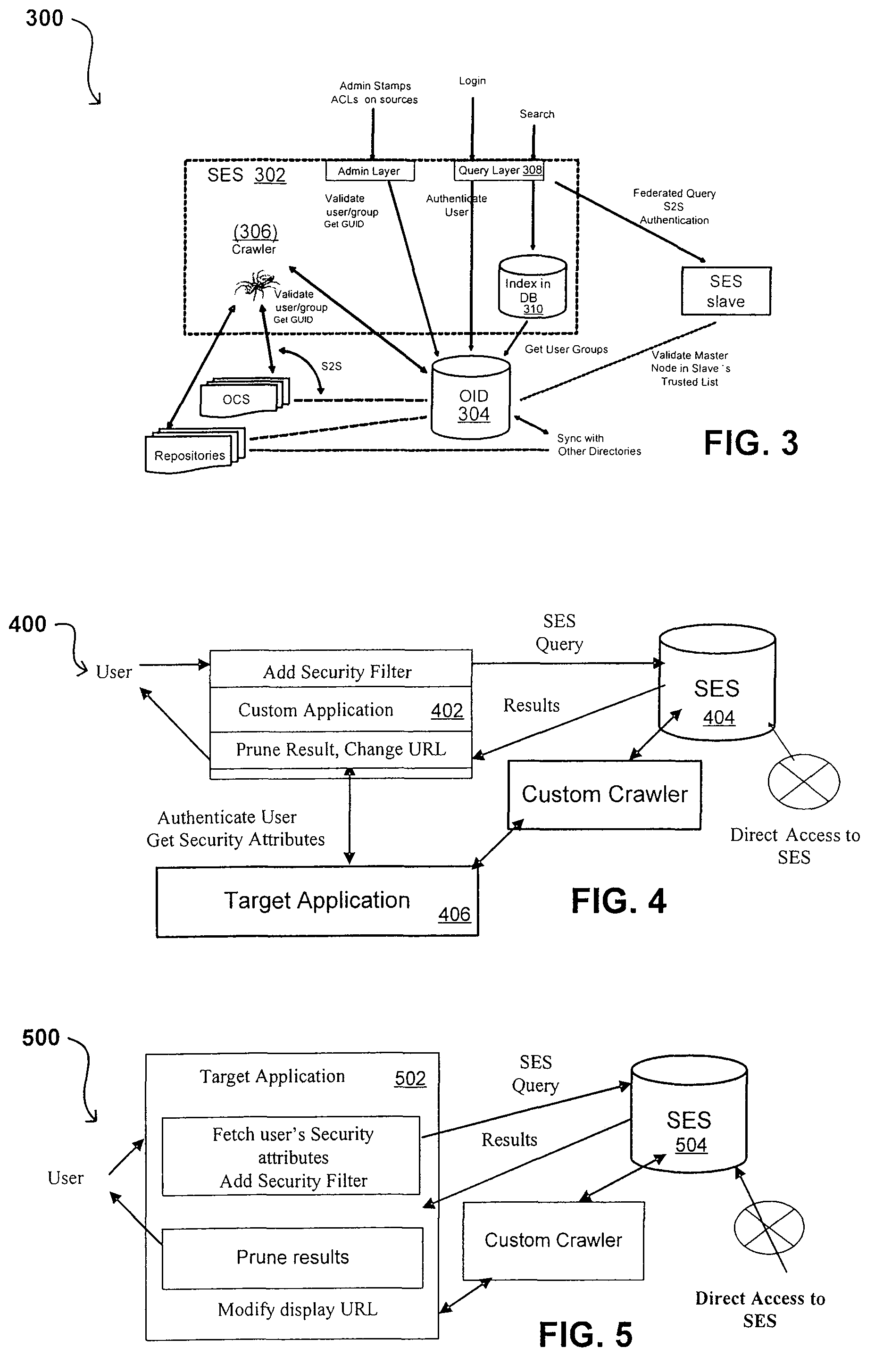Document date as a ranking factor for crawling
a document date and ranking factor technology, applied in document management systems, web data retrieval, instruments, etc., can solve problems such as user being denied access to the requested secure sour
- Summary
- Abstract
- Description
- Claims
- Application Information
AI Technical Summary
Benefits of technology
Problems solved by technology
Method used
Image
Examples
Embodiment Construction
[0080]Systems and methods in accordance with various embodiments can overcome the aforementioned and other deficiencies in existing search and querying systems by providing a flexible, extensible, and secure architecture that can operate across enterprise systems. Such an architecture can provide a simple Internet-like search experience to users searching secure content inside (and outside) an enterprise.
[0081]An extensible enterprise search mechanism in accordance with one embodiment provides for the crawling and searching of a variety or sources across an enterprise, regardless of whether any of these sources conform to a conventional user role model. The mechanism allows for security attributes to be submitted at query time, for example, in order to provide real-time secure access to enterprise resources. The user query also can be transformed to provide for dynamic querying that provides for a more current result list than can be obtained for static queries.
[0082]Such functional...
PUM
 Login to View More
Login to View More Abstract
Description
Claims
Application Information
 Login to View More
Login to View More - R&D
- Intellectual Property
- Life Sciences
- Materials
- Tech Scout
- Unparalleled Data Quality
- Higher Quality Content
- 60% Fewer Hallucinations
Browse by: Latest US Patents, China's latest patents, Technical Efficacy Thesaurus, Application Domain, Technology Topic, Popular Technical Reports.
© 2025 PatSnap. All rights reserved.Legal|Privacy policy|Modern Slavery Act Transparency Statement|Sitemap|About US| Contact US: help@patsnap.com



